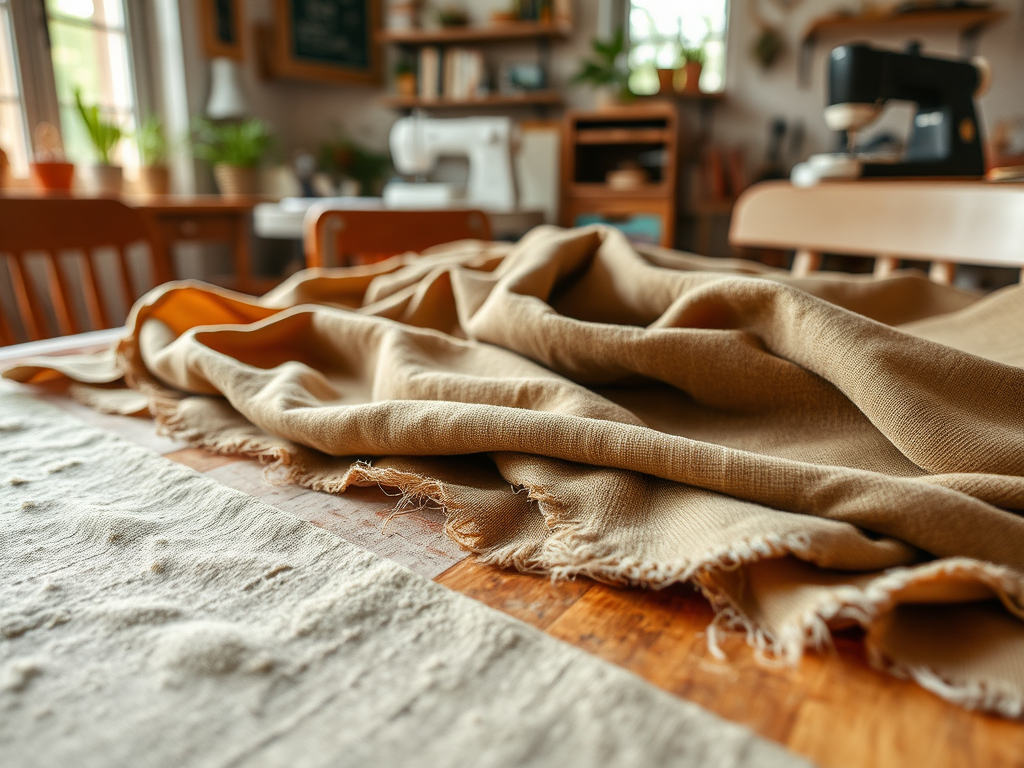In the world of fashion, your choices don’t just end at color and style; the fabric type is equally crucial in defining comfort, durability, and even the entire aesthetic of a garment. With a myriad of materials available, understanding the characteristics and applications of each fabric can empower you to make informed decisions for your wardrobe. Imagine slipping into a cozy wool sweater on a chilly day or donning a silky blouse that glides beautifully over your skin. These experiences are not merely happenstance; they stem from selecting the right materials. Knowledge of fabrics allows you to navigate the textile landscape adeptly, ensuring your clothing not only looks good but also feels good. This guide will delve into the major fabric types commonly found in fashion, elaborating on their properties, uses, and best practices for selection.
Natural Fabrics

Natural fabrics, often sourced from plants or animals, bring unique qualities to the table that synthetic materials sometimes struggle to replicate. Renowned for their breathability, comfort, and environmental sustainability, these fabrics have been a staple in textiles for centuries. As more consumers gravitate toward eco-friendly options, understanding natural fabrics becomes paramount. They not only reflect a commitment to sustainable fashion, but they also offer a touch of luxury and elegance that synthetic fibers may lack. Exploring the world of natural fabrics reveals not just their aesthetic charm but also their functional benefits, making them ideal choices for various applications.
Cotton
Cotton is perhaps the most beloved fabric for everyday wear. This soft, breathable material has been cherished for its comfort and versatility, making it a go-to choice for everything from casual tees to elegant dresses. One of its standout characteristics is its absorbency, enabling cotton to wick away moisture, perfect for warm or humid conditions. It is also durable, which means that with proper care, cotton garments can last for many seasons. Whether you opt for 100% cotton or blends with other materials, you can enjoy the benefits of this classic fabric. Here’s a breakdown of the key features of cotton:
- Soft and cozy texture
- Highly breathable and absorbent
- Durable and long-lasting
- Hypoallergenic, making it suitable for sensitive skin
Linen
Linen is another esteemed natural fabric, renowned for its lightweight and airy qualities. Made from the flax plant, this fabric often exudes a casual, relaxed vibe, making it perfect for summer clothing. Due to its quick-drying nature, linen is excellent for hot weather, allowing the skin to breathe and stay cool. However, it is important to note that while linen is incredibly durable, it does tend to wrinkle easily, adding to its laid-back charm. Many fashion enthusiasts appreciate the subtle, textured look of linen garments. Here are some additional attributes of linen:
- Strong and long-lasting
- Natural antibacterial properties
- Ideal for warm weather clothing
- Grows softer with each wash
Wool
Wool, largely sourced from sheep, stands out in the realm of natural fabrics due to its exceptional insulation properties. Especially valued in colder climates, wool traps heat effectively to keep you warm. This natural fiber also has moisture-wicking abilities, ensuring you remain dry even in chilly weather. Wool is inherently elastic, allowing it to maintain its shape over time, making it a popular choice for sweaters, coats, and suits. The versatility of wool can be observed in various weaves and finishes, each offering unique textures and styles. Below is a comparative overview of wool’s features:
| Property | Benefit |
|---|---|
| Insulation | Keeps you warm in cold weather |
| Elasticity | Retains shape after wearing |
| Moisture-wicking | Keeps you dry and comfortable |
| Durability | Long-lasting wear capabilities |
Synthetic Fabrics

Synthetic fabrics have revolutionized the textile industry, offering durability and resistance to various elements such as water and wrinkling. These materials, created through chemical processes, often cater to active lifestyles and modern fashion demands. The blend of functionality and style found in synthetic fabrics has made them a popular choice among consumers. In addition, they can be produced at lower costs compared to some natural fibers, making them accessible to a broader audience. The following synthetic fabrics are widely recognized in the fashion world:
Polyester
Polyester remains a dominant force in the world of fashion fabrics. Its resilience to wrinkling and shrinking makes it a preferred choice for many garment types. Additionally, polyester dries quickly, which is advantageous for activewear and outerwear. When blended with natural fabrics, it enhances durability while retaining comfort. Many fashion brands utilize this material for its versatility, making it suitable for both casual and formal attire. Below are key benefits associated with polyester:
- Resistant to stains and wrinkles
- Offers excellent durability
- Quick-drying and lightweight
- Can mimic the feel of natural fibers when blended
Nylon
Nylon is often recognized for its strength and elasticity. This synthetic fabric is pivotal in the world of outdoor gear and activewear due to its lightweight and water-resistant properties. Often used in sports apparel, skirts, and jackets, nylon provides flexibility and comfort for active lifestyles. Its versatility has led to its adoption in numerous applications beyond clothing, such as upholstery and accessories. As you consider nylon for your wardrobe, keep in mind the following aspects:
- Offers high tensile strength
- Resistant to mildew and abrasion
- Quick-drying capabilities
- Comfortable stretch for better mobility
Blended Fabrics
Blended fabrics combine the strengths of both natural and synthetic fibers to create materials that excel in various respects. These fabrics can provide improved durability while retaining the comfort and aesthetic qualities of their natural counterparts. The blending of fibers allows designers to produce garments that meet specific performance and stylistic requirements. For instance, cotton-polyester blends are famous for being both soft and resilient, while silk-like fabrics offer luxurious feels at lower costs. Here’s a look at some common blends and their benefits:
| Blend Type | Characteristics |
|---|---|
| Cotton-Polyester | Soft, wrinkle-resistant, and shape-retaining |
| Silk-Like Blends | Smooth, shiny, and lightweight |
Choosing the Right Fabric for Your Needs
When deciding which fabric to choose, many factors should be considered, including the garment’s purpose, the climate, and your personal preferences. Each fabric type offers distinct advantages that can cater to specific needs. For example, if you prioritize breathability, natural fabrics like cotton and linen may suit you best. Conversely, if you require durability and high performance, synthetic textiles might be the way to go. Understanding these nuances allows you to invest in pieces that align seamlessly with your lifestyle.
Conclusion
Understanding various fabric types equips you with the knowledge to make better fashion choices, ensuring that your wardrobe meets both your comfort and style needs. Whether you favor the breathability of cotton, the elegance of silk, or the resilience of polyester, knowing each material’s characteristics helps you select pieces that serve you best. Ultimately, the right choices will lead to a more functional and fashionable wardrobe. Each fabric type brings its own charm and functionality; therefore, a deep understanding of their properties will enhance your shopping experience and wardrobe satisfaction.
Frequently Asked Questions
- What is the most breathable fabric?
Cotton is known for its breathability, making it an excellent choice for hot weather. - Are synthetic fabrics less comfortable than natural fabrics?
It depends on the specific fabric and its purpose. Some synthetic fabrics, like bamboo blends, can be very comfortable. - How can I tell if a fabric is of good quality?
Look for tight weaves, feel the texture, and check for consistent dyeing and color. - Should I prefer natural or synthetic fabrics for activewear?
Synthetic fabrics, like polyester and nylon, are typically more suitable for activewear due to their moisture-wicking properties. - Can I wash all types of fabrics in the washing machine?
Not all fabrics are machine washable. Always check care labels for proper washing instructions.